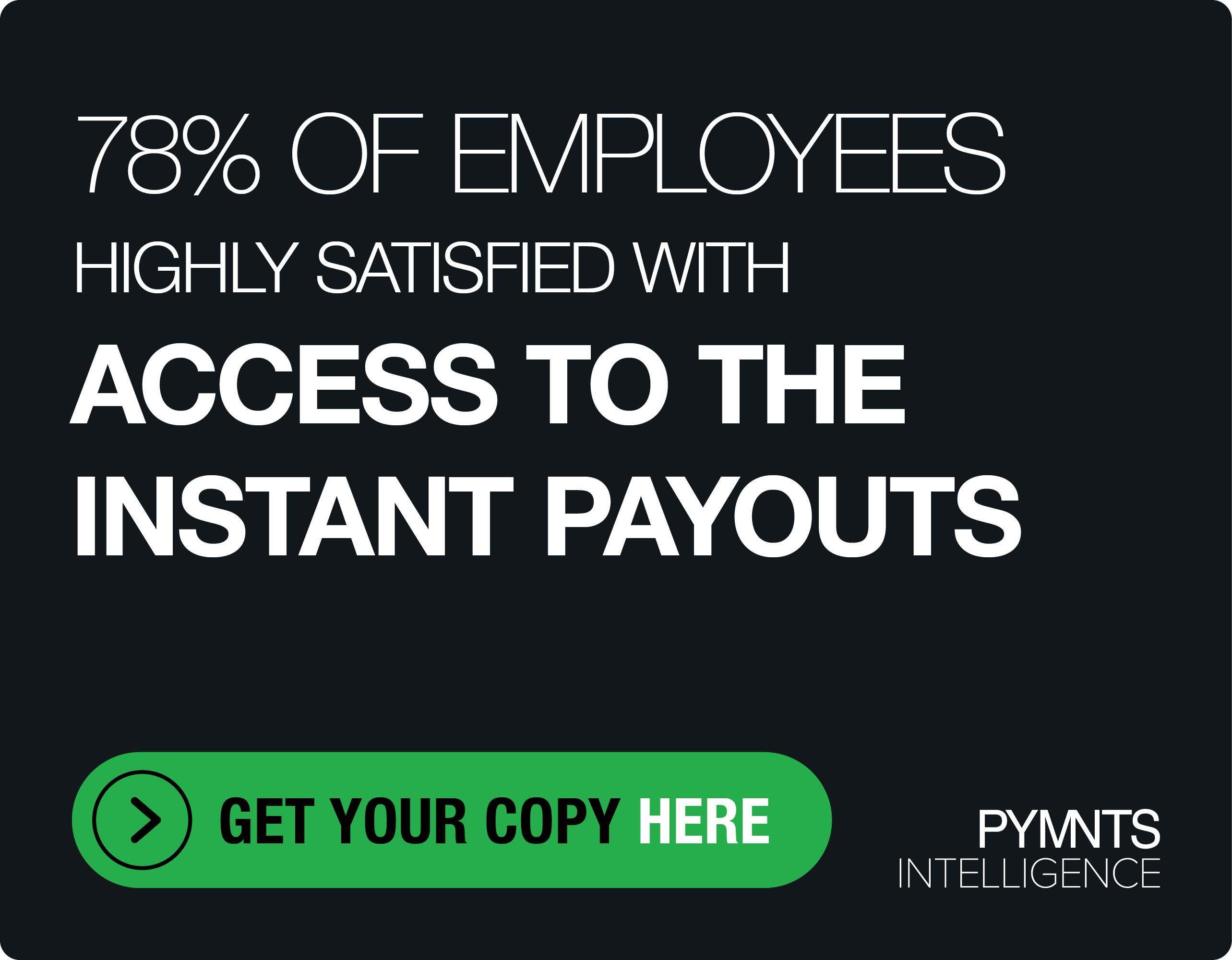How Canada Sets The Foundation For Mobile Payments Success
Canada has been considered one of the “first movers” of mobile payments – partly because the nation is often quick to adopt new technologies. And the key to making that a more widespread trend, says RBC, is about delivering solutions that meet the needs of consumers and merchants. In a recent interview, Linda Mantia, EVP of Digital, Payments & Cards at RBC sat down with PYMNTS to discuss how its cloud solution adds flexibility and security to industry solutions such as Host Card Emulation (HCE).
Canada has been considered one of the “first movers” of mobile payments – partly because the nation is often quick to adopt new technologies. And the key to making that a more widespread trend, says RBC, is about delivering solutions that meet the needs of consumers and merchants. In a recent interview, Linda Mantia, EVP of Digital, Payments & Cards at RBC, sat down with PYMNTS to discuss how its cloud solution adds flexibility and security to industry solutions such as Host Card Emulation (HCE).
Canadians are generally early adopters of technology and it is no different with mobile payments. In fact, Canada has been considered the “first mover” in mobile payments. In your opinion, what is driving mobile payments adoption in Canada, and what makes the country a unique market?
LM: Technology is changing the way consumers go about their day-to-day — from how they bank to how they shop and now how they pay. And this is a universal trend broader than Canada. But whether it’s in person, online or through a user’s mobile device, we want to be where our clients are. We are committed to providing our consumer and merchant clients with the most innovative, convenient and secure payment solutions.
Canada’s early commitment and investment in EMV card security meant that our merchants adopted the latest card terminals, setting the scene for a high penetration of contactless terminals in the country. At RBC, we have been a proponent of contactless payment since its inception. Today, all of our high volume products support Visa payWave, MasterCard PayPass or Interac Flash and we invested the time educating consumers on the advantages of using it.
The biggest challenge to mobile payments today is the efficacy of the payment card – it just works and with contactless, it just works quickly. When we set about to build a mobile payment solution, we focused on a couple of things centered around the user experience: ensuring the solution was quick to set up or provision, provided choice in how to pay between credit and debit, and was quick to use/pay for your purchase at the point of sale.
The SIM-based solution didn’t work for us – it took five to 60 minutes to set up each payment card and required the consumer to go through a bunch of hoops. That’s some of the main reasons why we created RBC Secure Cloud so our clients could provision very quickly, instantly have access to all of their payment cards, and never have to provision anything again. Our SIM-based solution provisions 98 percent of the time in fewer than two minutes, most in and around one minute. Our host card emulation solution provisions almost instantly.
As Canada leads in the evolution of the mobile payments ecosystem, it falls behind in the security aspect of it. What security challenges are you facing today and how are these being addressed?
LM: Consumers take security very seriously, especially when it comes to trusting a company with their finances; we understand that and we think it’s one of the reasons people turn to their bank for their payment needs. As a result, security is our primary concern.
Recent developments with open-source software have given NFC new life, essentially allowing financial institutions to bypass the secure element on smartphones. That “toll gate” spurred innovation that led to HCE, removes one of the biggest challenges, and the stranglehold in the U.S.
Our architecture for our current RBC Secure Cloud mobile payment solution and for our HCE solution goes above and beyond what is required. It ensures that we understand who the customer is before they get access to mobile payments; it securely transmits data from our host to the device and ensures that only the customer’s device can pay and only at contactless point-of-sale terminals (eventually within an app as well). Security is a moving target with whole countries trying to attack us, but by holding to our holy trinity of client, device and payment credentials, we believe that we have a strong handle on how to deliver secure payments into the future.
What role does HCE play in a cloud environment? Will HCE replace the RBC Secure Cloud?
LM: The RBC Wallet is powered by RBC Secure Cloud, meaning all sensitive customer data is stored securely with RBC in the cloud, not on the phone. That makes for a safer, faster, more flexible solution.
HCE opens up mobile payments to more clients by removing the constraint on device, carrier and SIM; as long as you have the appropriate Android device. HCE makes RBC Secure Cloud mobile payments even easier to use for the client.
As we release our HCE solution in the coming weeks, we will sunset the SIM-based model and migrate our clients over. The key principles and infrastructure that powered the RBC Secure Cloud SIM edition will now power the RBC Secure Cloud HCE edition, bringing the same security, convenience and choice that our customers have loved since its launch.
What is fueling mobile payment innovation in Canada and what role does RBC play?
LM: Card issuers are in competition with both traditional and non-traditional companies from blue chip to startups to technology companies. At our last count, there are over 2,500 payment apps in Google Play and the App Store that challenge the relationship we have with our clients. As the largest payments company in Canada, we need to innovate to maintain our clients’ trust. We need to make it easier for our clients to choose RBC payment cards in line or online. And we need to do it before we are made irrelevant.
Canada has a long history of being a global leader in payments and RBC has been leading the charge in mobile with several firsts over the past 18 months:
- Delivered the world’s first domestic debit mobile transaction in partnership with McDonalds.
- Created the world’s first cloud-SIM hybrid mobile payment solution delivering the best possible user experience.
- Partnered with Facebook to launch the first social person-to-person (P2P) money transfer service in North America.
- Introduced RBC Wallet, the first financial institution in Canada to introduce a mobile wallet that provides the customer with the choice of paying with either debit or credit.
- Developed the first North American financial institution HCE payment solution providing more clients with more choice in how they pay.
We will continue to invest to ensure we are where our clients are and that our technology provides the best possible user experience.
Finally what are you hearing from both, your consumers and merchant clients?
LM: Merchants in Canada are facing many challenges: they need to lock down their house to prevent data breaches, reduce fraud particularly in eCommerce, and respond to new online business models. Now they are faced with assessing how to address mobile commerce and its impact to their business. When we started our program a few years ago, we established our commitment to merchants and we continue to hold to it: mobile payments will not bring any added costs. We believe in this so strongly that we actually held our mobile payment solution back from market for over six months until we were able to offer clients choice between credit and debit so that mobile payments would not increase merchants’ cost of acceptance.
On the consumer side, we are continuing to see client adoption and commitment to simplifying payment at the point of sale. In their daily lives, consumers don’t consciously focus on the payment; they are driven by things they need to get done, errands to run, etc., which may involve making purchases. Consumers want the payment to be as seamless and as easy as possible. We are working on a number of solutions that will enhance the consumer experience while making it faster and easier to accomplish their daily tasks.

Linda Mantia
Executive Vice President, Digital, Payments & Cards, RBC
